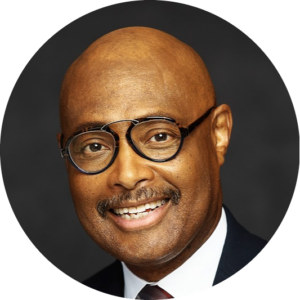

Diversity and inclusion initiatives are vital for insurers that want to close the talent gap and tackle any branding issues the industry faces, and there is no time to waste.
That’s according to panelists at the Diversity, Equity and Inclusion: Expanding Opportunities in Insurance conference that took place virtually last month. The event was hosted by the American Property Casualty Insurance Association (APCIA), the Life Insurance Council of New York (LICONY) and the American Council of Life Insurers (ACLI).
“Are you creating an environment that is welcoming, that creates that sense of belonging? And if not, what can you do to change that immediately today?” said panelist Jennifer Stroud, director of talent management at the National Association of Insurance Commissioners (NAIC). “Don’t let another minute go by.”
Talent issues have afflicted the insurance industry for quite some time as it confronts an aging workforce. As older generations age out of the industry and new generations take their place, there is increased multicultural representation in talent pools, pushing companies to rethink their diversity and inclusion strategies, Insurance Journal previously reported.
According to a Pew Research Center report, post-millennials—commonly referred to as Generation Z—are on track to be the most diverse generation yet, with nearly half of Gen Z-ers ages six to 21 in 2018 being considered racial or ethnic minorities. That’s compared to 39 percent of millennials ages six to 21 in 2002 being nonwhite and only 18 percent of early boomers within that age range in 1968 being nonwhite.

However, data show insurance has struggled with putting itself out there and marketing itself to a diverse pool of talent, DEI panelists said. Insurance workforce data from the Bureau of Labor Statistics as of 2016 show African Americans made up just 11.9 percent of the industry. Standard & Poor’s reported that number had increased slightly to 12.4 percent in 2019, Insurance Journal previously reported.
A 2018 study from the Independent Insurance Agents found only 2 percent of established agencies have at least one African American principal. About 4 percent of independent agencies have an African American principal or senior manager compared with 88 percent of those with white agency leadership.
In the face of the talent gap, the industry needs to focus on bringing a more diverse workforce through its doors, because once that happens, employees tend to stick around, said panelist Devin Delatorre, president-elect of the Latin America Association of Insurance Agents (LAAIA).
“I think that this industry has so many different avenues and so much to give, which is why when people come into our industry, they fall in love,” he said. “Because there are so many different avenues that they can go.”
A Mindset Shift
However, attracting diverse talent to the industry is something that takes ongoing work, Stroud said.
“To transform the people and practices of an organization, it does take a lot of work. It takes a lot of effort,” she said. “There’s a mindset shift that needs to happen.”
The shift she’s talking about starts at the top, she said, adding that managers need to understand why they’re putting in the work in order to find it meaningful.
“They have to understand, ‘Why are we doing this extra work?'” she said. “Helping other leaders understand their ‘why’ helps fuel the momentum that it takes to sustain the hard work that goes into a transformation.”

She said part of this transformation is throwing out the idea that employees work for their leaders, and instead, assuming the new mindset that leaders work for their employees.
“If we shift that to, ‘I actually work for my employees,’ what would we do differently?” she said. “How would I think about the workplace experience differently if I had that mindset first?”
She encouraged leaders to focus particularly on the inclusivity piece of the equation, or cultivating “a sense of belonging.”
“It doesn’t do any good to diversify your talent if it’s not a welcoming organization to work for,” she said. “Managers have a huge opportunity to really shape what it feels like to work for them or what it feels like to work on their team.”
As a leader, she said part of this means understanding the barriers that exist toward making the workplace inclusive and committing to removing them. A 2018 report by Marsh that included participation from members of the National African American Insurance Association (NAAIA) said 70 percent of respondents either agreed or strongly agreed that there are greater obstacles for African Americans in the insurance industry compared with other minorities. Respondents said the key barriers to entry into the insurance business were lack of exposure, lack of networks, lack of experience, racial bias, lack of educational preparation and gender bias, Insurance Journal previously reported.
Once these barriers to entry are dealt with, another important factor in employee retention is two-way communication, Stroud said.
“Part of inclusivity is the feeling that you’re being heard, the feeling that you have an opportunity to share your perspective and that perspective matters,” she said.
Invest in Upcoming Leaders
While inclusion may start at the top, it doesn’t end there, said panelist Jerald Tillman, founder of NAAIA.
“It must be a very inviting atmosphere, an atmosphere of encouragement, and that has to seep down within the corporation,” he said.

Indeed, in addition to educating management, investing in upcoming leaders through leadership development programs is equally vital to building a diverse and skilled workforce, Stroud said. This is particularly true not only in light of the changing work environment due to COVID-19 but also social justice reform initiatives that have become top of mind for many companies over the past year. Ensuring that leaders and soon-to-be leaders have an awareness of their responsibility in the role that they play, she said, is critical.
“If you’ve got a leadership development program in place today that hasn’t really evolved or updated or changed over time, I would suggest the very first thing that you do is look at that program because the work experience of March 16, 2021, is not the experience of a year ago,” she said. “The competencies that it takes to lead high-performing organizations today are different than even what they were a year ago, really, in response to the pandemic, with COVID and social justice and social responsibility initiatives that we see going on today.”
Leave the Comfort Zone
Just as important as leadership training and education, however, is accountability, Stroud said. She added this is important to not only ensure diversity and inclusion initiatives exist within insurance companies but that there is consistent analysis of those processes.
“Two important things are the development programs built for tomorrow and then this notion of accountability built into evaluating people and processes with an eye toward diversity, equity and inclusion,” she said.
Tillman said leaving the comfort zone that many insurers find themselves in is the first step to confronting any diversity and inclusion issues within the industry.
“I think this whole D&I issue is a challenge to all of us,” he said. “I think the challenge is just getting out of our comfort zone. The industry is in a comfort zone, and the industry is trying to find its way out of its comfort zone into diversity and inclusion.”
Delatorre agreed.
“We need to stop tiptoeing about the conversation and hit it on head-first,” he said. “If you are conscious, courageous and accountable, this can work.”